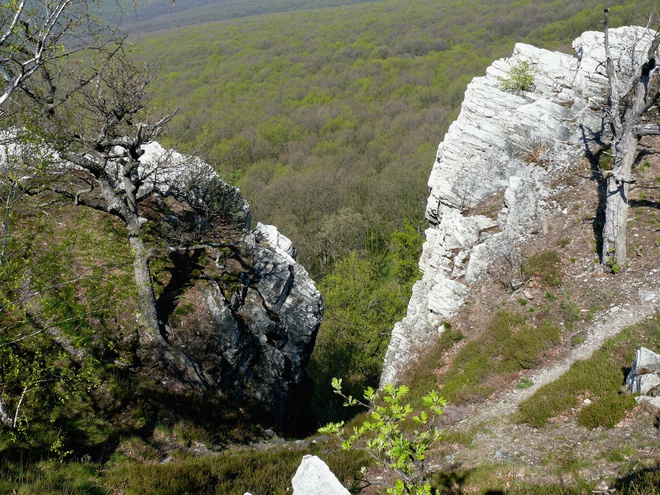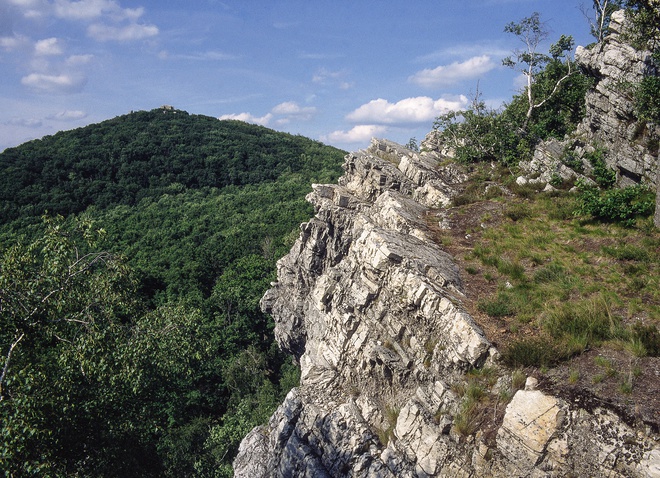Studený Hrad and Mountaineering
The remains of an unknown fortification (called Studený hrad – Cold Castle) are preserved on the rocky promontory of a quartzite hill, 500 m south of Gýmeš, at an altitude of 432 MASL. On older maps it is usually refered to as Várhegy (Castle Hill).
In the saddle below Gýmeš (station No. 9), we turn to the yellow mark (8135) on the right (west) and go through the woods a short, almost horizontal stretch of rocky slopes with tourist signpost under cold castle, 424 MASL. Time: 2 min. in both directions, length: 0.1 km, easy.
- contents:
- Studený hrad
- Horolezectvo
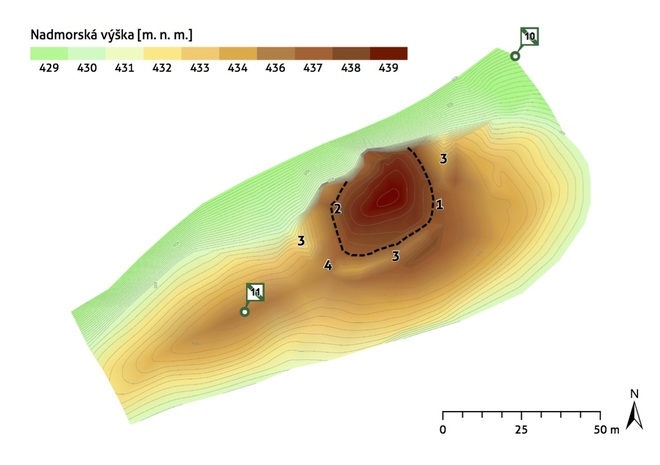
Studený hrad
The oval platform measuring approximately 25 × 35 m is bordered on the south, north, and east by a 2 m-high rampart, which was piled up by digging a 1.5 to 2 m broad moat. The fortification most probably consisted also of a wooden paling. From the west the platform is protected by a steep natural slope. The gate to Studený hrad was situated at the place where the turn from the yellow route enters its area. The turn crosses Studený hrad through the backfilled moat and ends after about 150 m at the lookout of station No. 11 Čeriny.
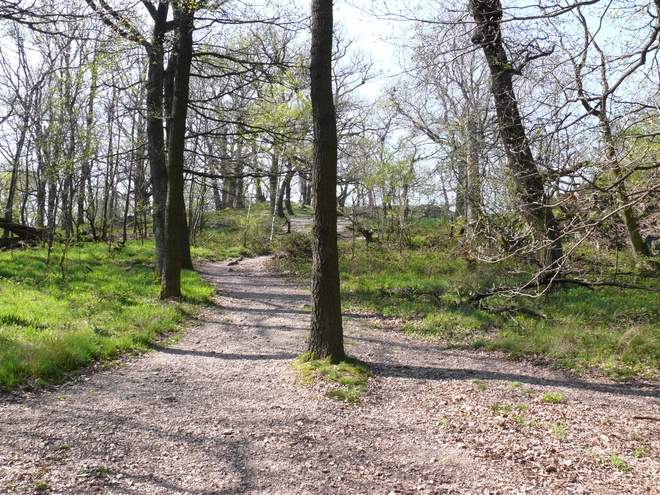
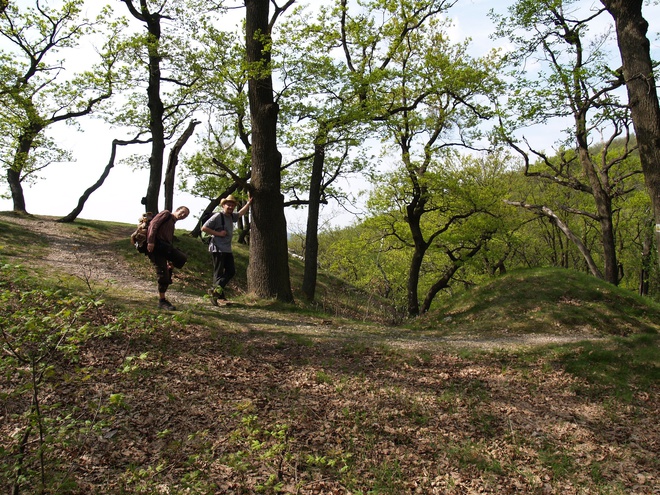
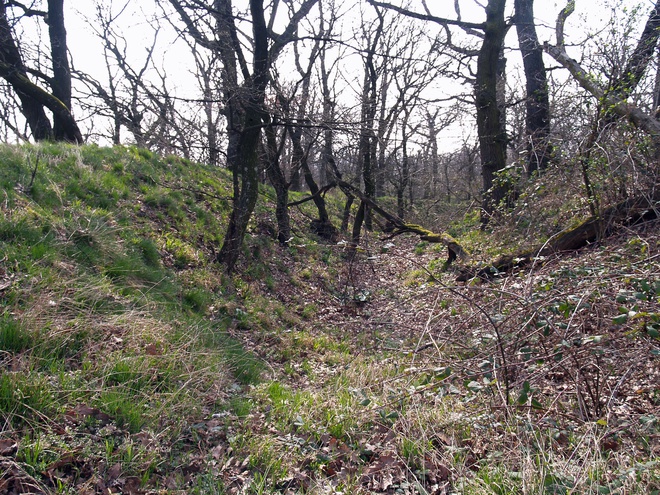
The castle belongs to simple fortifications with only temporary wooden buildings. From its position it is clear that it controlled the road from Gýmeš to Sedlo pod Gýmešom. Today it is not known whether it is somehow related to Gýmeš Castle or of older origin. It could have been built already by the castle people of Kostolany in connection with their duties to guard the Kostolany Basin. The mountain pass over the Sedlo pod Gýmešom is the shortest route to Kostoľany pod Tribečom from Nitra. This is further supported by the mention of a road from Nitra through Hrnčiarovce, Dolné Štitáry and Kolíňany to Gýmeš Castle in a deed of the Hungarian King Bela IV (1235–1270) from 1253 donating Gýmeš (Jelenec) to the Forgach family.
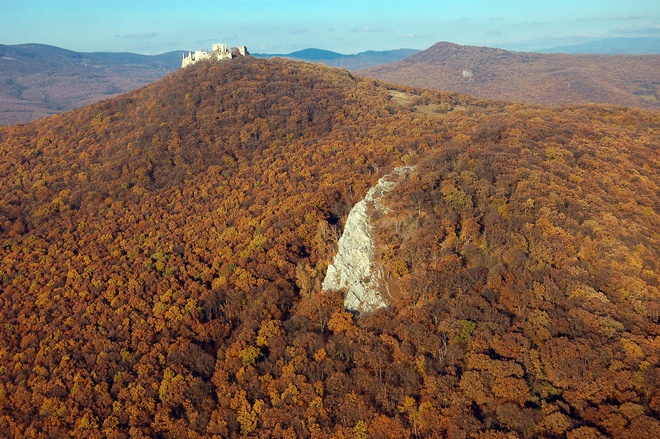
Horolezectvo
The rock walls of Studený hrad have been visited by climbers since the 1960s. Since 1962 TJ Slávia VŠP regularly climbs the training walls at Zobor, Žibrica, Studený hrad and Veľký Lysec. Dozens of first ascents have been undertaken here, the rocky areas and the individual natural formations aptly denominated.
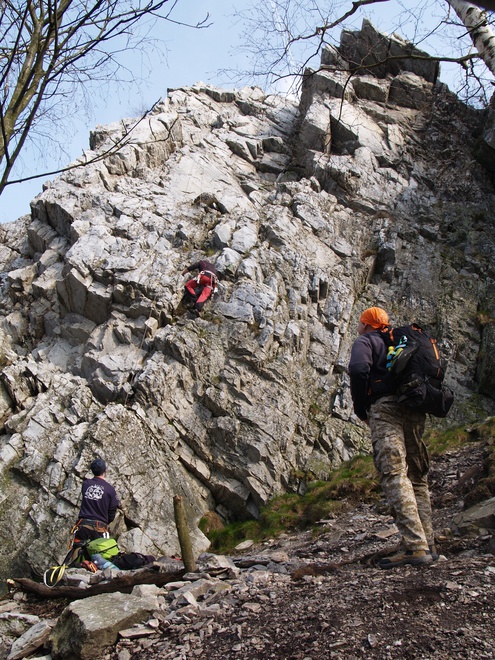
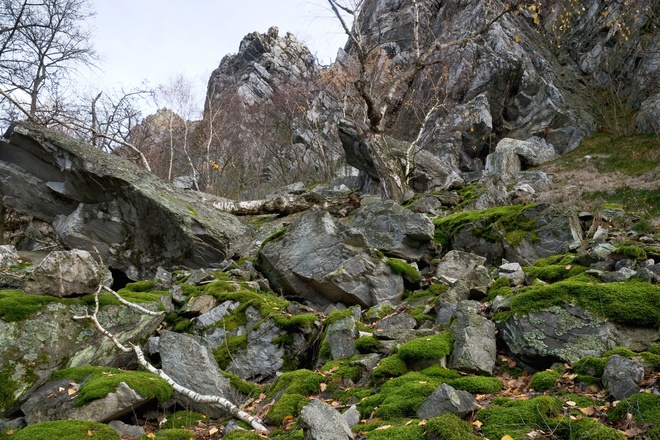
Generations of climbers have visited the rocks, whose height reaches up to 35 m, nationwide reunions and competitions in climbing, as well as meetings of mountaineers in the IAMES Slovakia cottage on the edge of the area Remitáž have been held here. To experienced hikers these rocks offer adrenaline adventures. Under good weather conditions, the rock chimney near Ťava can be climbed freely and one can step on the upper fringe of the Studený hrad rocks and enjoy the wonderful view. The rock slabs are often covered with ice in the winter and one has to be careful on the trail.
